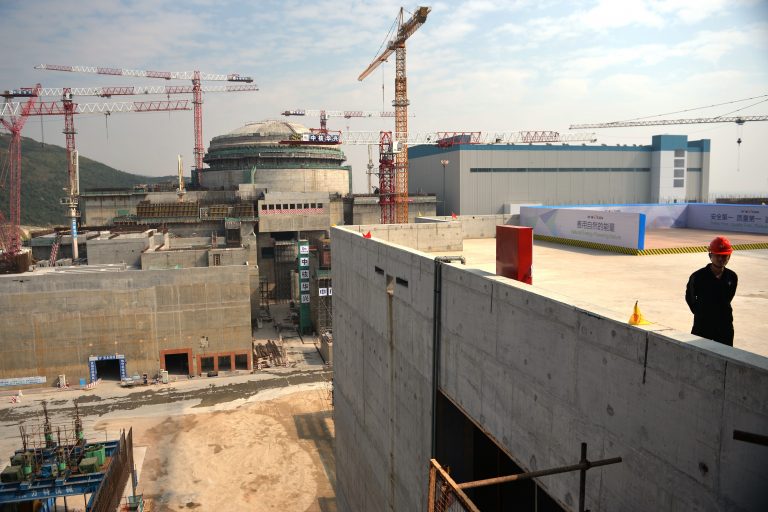The Sino-French jointly-owned nuclear power plant at Taishan was halted in August after a problem with fuel leakage was reported, causing a potential “radiological threat.”
The reactor, built in China’s southern province of Guangdong, is operated by China General Nuclear Power Group and state-controlled company Electricite De France (EDF).
The Commission for Independent Research and Information on Radioactivity (CRIIRAD), a French organization that was created following the aftermath of the Chernobyl accident, told France’s nuclear safety authority that a whistleblower had reached out to them with information about the possible cause of the leak.
In addition, while authorities have admitted that about five nuclear fuel rods were damaged, the whistleblower told French state broadcaster Radio France Internationale that the real number was more than 70.
Nuclear fuel rods are responsible for the sustained fission reactions that occur in nuclear power plants, creating heat that boils water and allows power generation. Reactions are kept at safe levels by inserting and retracting control rods made of dampening materials such as graphite. Mechanical flaws or incompetence — as was seen in the 1986 Chernobyl disaster — can lead to radiation leaks or nuclear meltdown.
Design flaws in Taishan reactor
The whistleblower, identified only as a French engineer with a background in nuclear industry and with detailed knowledge about the Taishan reactor said that the fuel damage could be attributed to a possible design flaw in the vessel’s reactor pressure. It was also added that the damage found on the assemblies was due to “abnormal vibrations.”
Success
You are now signed up for our newsletter
Success
Check your email to complete sign up
These vibrations could be associated with a design flaw in the EPR pressure vessel, the whistleblower was quoted as telling CRIIRAD.
CRIIRAD was in contact with the country’s nuclear safety authority on Nov. 27 via email and asked the nuclear watchdog to thoroughly investigate the whistleblower’s claims. It added that any issues stemming from the Taishan plant could have implications for other nuclear reactors EDF is developing in France and abroad.
“It is essential that the nuclear safety authorities of the countries concerned can carry out a rigorous analysis of the feedback stemming from Taishan 1 and its consequences for the safety of EPR reactors,” CRIIRAD said in the email.
An EDF spokesperson said on Nov. 29 that the investigation into the buildup of inert gasses is still underway, adding that the cause of the problem could not be fully determined until that investigation is completed.
Investigation still months from finish
Julien Collet, deputy general director at the nuclear safety authority (ASN), told Reuters that it was still too early for the agency to draw any conclusions as investigations will take a few months to complete.
“That said these are questions that will need addressing from a safety point of view when the right moment comes,” Collet said.
In June, the Chinese nuclear safety administration acknowledged an increased level of radioactivity in the primary circuit of one of the two reactors due to damaged fuel rods, but said it was “completely different from a radiological leakage accident” because the “physical barriers are safe.”
It also denied raising the acceptable limits of radiation, and said the levels were “still within the range of allowable, stable operations.”
CNN also reported on June 14 that the U.S. government was spending considerable resources in assessing the “imminent radiological threat,” following the announcement that a potential leak had been reported in the Taishan plant.














